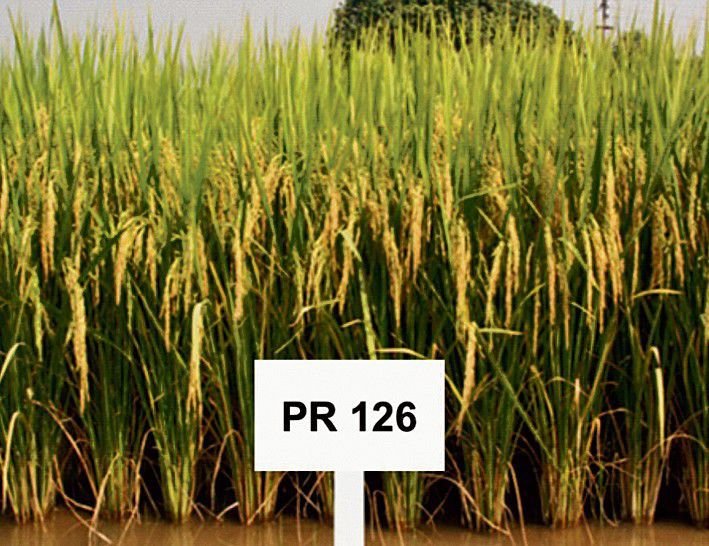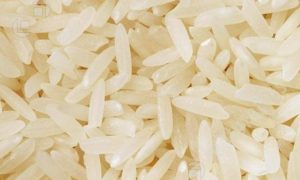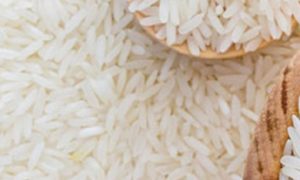PAU rice variety PR 126 retains the top spot again

PR 126, a rice variety developed by Punjab Agricultural University (PAU), has become the preferred choice for farmers in Punjab and beyond due to its non-water-intensive nature, early maturity, and high yield. Amidst severe water scarcity, PR 126 stands out for consuming 25% less water compared to varieties like PUSA 44, yet yielding 32 to 37.2 quintals per acre when transplanted in July. It also resists pests, reduces pesticide costs, facilitates efficient residue management, and ensures timely wheat sowing.
When the state is reeling under a severe water crisis due to the cultivation of water-intensive rice, a rice variety, ‘PR 126,’ developed by Punjab Agricultural University (PAU), has once again emerged as the most preferred by farmers in Punjab and other states for being non-water-intensive, early maturing, and having high yielding qualities.
Additional Director of Research (Agriculture) at PAU said, “No matter whatever agrarian challenges may come up, PAU has always come to the rescue of the agricultural community with the provision of on-the-spot solutions. The PR 126 remains unstoppable and unsurpassed this season as well in comparison to the water consumed by PUSA 44, which has worsened the water scarcity situation in the state.”
He said that despite its holding capacity to address the problem of water depletion and greenhouse gas emissions, the PR 126 variety has retained the top spot this year with the sale of 11,000 quintals of seed, as against 4,800 quintals during the last year. It was garnering the admiration of different stakeholders, comprising farmers and millers, for being resource efficient, thus sustaining rice production on a large scale.
Speaking about the field observations and salient features of PR 126, Dr Mangat said, “Keeping in view the dwindling water resources, there is an urgent need to transplant rice close to the start of monsoon, which usually arrives in the state during the early July of every year. The farmers’ participatory studies indicate that PR 126 is such a variety that yields 32 to 37.2 q/acre when transplanted in July, which is much higher than long-duration varieties such as PUSA 44 and PR 118 (yielding 24 to 28 quintals per acre during July transplanting).”
He said owing to its shorter duration and its transplanting coincident with monsoon rains, it requires 25 per cent less water than the PUSA 44 and other long-duration varieties of the seed.
“Similarly, to realise water savings in direct seeded rice (DSR), sowing PR 126 during June month results in a significant enhancement of water use efficiency over long-duration varieties. The higher per-day productivity of 24.4 kg per day per acre was a major characteristic of this variety, leading to yields comparable to those of long-duration varieties,” he added.
A rice agronomist, Dr Buta Singh Dhillon, said, “PR 126 escapes the attack of insect pests and diseases due to its shorter duration and genetic resistance to bacterial blight, leading to a saving of over Rs 1,500 per acre on pesticide spray compared to PUSA 44. Owing to the shorter duration, lesser straw load, and sufficient window period between paddy harvesting and wheat sowing, it is highly amenable for efficient paddy residue management and leads to timely wheat sowing for better yields.”
Stating that a one-week delay in wheat sowing leads to a yield penalty of 1.5 quintals per acre, he informed us that it equally fits well in multiple cropping systems. Stating that the milling quality of PR 126 was also comparable with the other varieties, he said that it was much better than the hybrids too.
Dr Mangat said that for successful rice cultivation, the experts have advised avoiding early sowing and transplanting aged seedlings. “Sow its nursery from the end of May to the end of June and transplant a 25–30-day nursery,” he added.
Besides, apply urea in three splits at seven, 21, and 35 days after transplanting (DAT), Dr Dhillon advised farmers. “Delay in urea application beyond 35 DAT (i.e., up to 42 DAT) can cause a yield penalty to the tune of 6.0 to 7.0 per cent.”
Source Link : https://www.tribuneindia.com/news/ludhiana/pau-rice-variety-pr-126-retains-the-top-spot-again-634519#goog_rewarded














